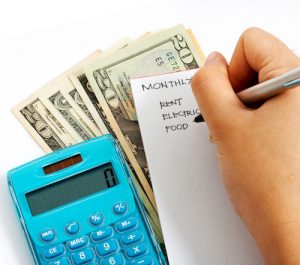Start Building an Emergency Fund in Five Simple Steps
It’s safe to say we’re living in uncertain times. The COVID-19 pandemic has caused school, restaurant, and factory closures, many leading to massive layoffs across the U.S. Unfortunately for many, this means these troubling times just got more difficult.
 It’s times like these when we all start thinking about an emergency fund. According to financial expert, Dave Ramsey, “an emergency fund is simply money you’ve set aside for life’s unexpected events.”
It’s times like these when we all start thinking about an emergency fund. According to financial expert, Dave Ramsey, “an emergency fund is simply money you’ve set aside for life’s unexpected events.”
I don’t know about you, but in my opinion, life is full of unexpected events. That’s why having an emergency fund is instrumental in having peace of mind during these troubling times.
If you don’t already have an established emergency savings fund, it’s never too late to start building one. Below are five simple steps to start building an emergency fund today.
Start as small as you need to
Building an emergency fund can seem daunting when you think of having to save six months’ worth of income. While coming up with a number can be helpful when trying to reach your goal, it’s important to not let that big number overwhelm you. Instead, use that number as a motivation to take even the smallest steps.
This year, my husband and I used our tax return to start our emergency fund. Yes, we should have probably done this years ago, but the important thing is that we’ve started one now. No amount is too small to start building. Take what you have available and get started.
Open a separate bank account
If you’ve tried starting an emergency fund for years with no luck, it probably has to do with where your money’s at. Sometimes, having your money too accessible can be tempting when you need those extra hundred bucks. Instead of keeping your money in your current account, I recommend opening a separate savings account in a completely different bank.
When looking for a banking institution to keep our emergency fund, my husband and I opted for a local credit union. It’s close enough to visit when making a deposit, but far enough to keep us from constantly withdrawing from the account.
Look for areas of improvement
 Reviewing your income and expenses is a great way to find extra money. While most people think they don’t have the extra money to put into an emergency fund, they’re usually making unnecessary expenses. Look for gaps in your spending and decide if there’s room for cuts in your budget. If you don’t watch TV, then you can likely save that cable bill for your emergency fund instead.
Reviewing your income and expenses is a great way to find extra money. While most people think they don’t have the extra money to put into an emergency fund, they’re usually making unnecessary expenses. Look for gaps in your spending and decide if there’s room for cuts in your budget. If you don’t watch TV, then you can likely save that cable bill for your emergency fund instead.
Set up automatic contributions
One of the biggest mistakes we make when it comes to saving is that we save what we have leftover, instead of saving and spending what we have. One of the easiest ways to me consistent contributions to your emergency fund is to set up automatic contributions. You can do this weekly or biweekly depending on how often you get paid. Remember, no contribution is too small when getting started. You can always adjust your contributions as needed.
Find additional income opportunities
If your current income is enough to cover all your monthly expenses but nothing else, it might be beneficial to look for additional income opportunities. Keep in mind that this income should be used solely to make contributions to your emergency fund. You’ll be surprised how quickly you can save by working a part-time job.
















